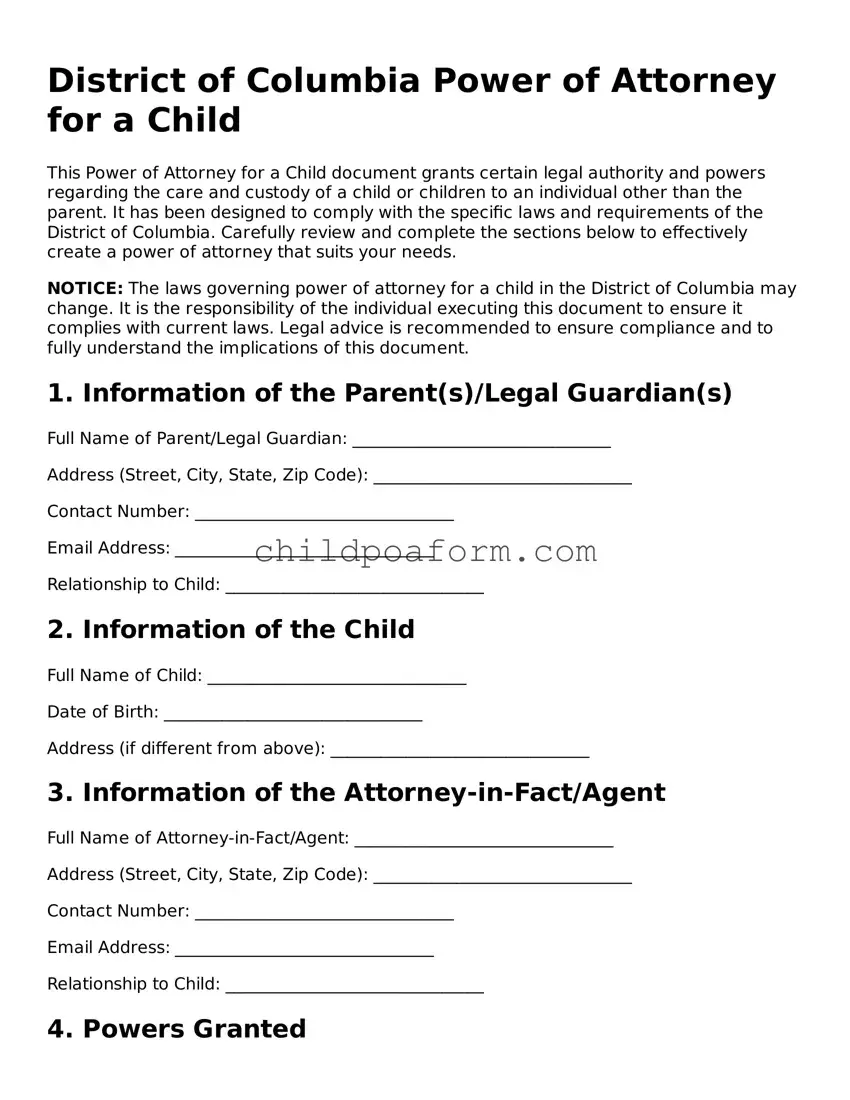Instructions on Utilizing District of Columbia Power of Attorney for a Child
Completing a Power of Attorney (POA) for a child in the District of Columbia is a critical step for parents or guardians who need to authorize another individual to make decisions on behalf of their minor child. This measure becomes particularly necessary in situations where the child's primary caregivers are unable to perform their duties due to various circumstances. The process involves filling out a form that grants the designated person the legal authority to act in the best interest of the child, covering aspects such as healthcare, education, and general welfare. Understanding how to accurately fill out this form ensures that the child's needs can be legally and effectively managed by someone the parents or guardians trust.
- Begin by gathering all necessary personal information about the child, the parent(s)/guardian(s), and the designated attorney-in-fact (the individual who will have the power of attorney).
- Locate the appropriate Power of Attorney for a Child form for the District of Columbia. Ensure the form is the most recent version to meet current legal standards.
- Fill in the child's full legal name, date of birth, and address at the top of the form.
- Next, insert the full legal names and addresses of the parent(s) or current legal guardian(s) granting the power of attorney in the designated spaces.
- Provide the full legal name, relationship to the child, and address of the person being designated as the attorney-in-fact for the child in the relevant section.
- Specify the powers being granted to the attorney-in-fact. This typically includes decisions related to the child's education, healthcare, and welfare. Be as clear and detailed as possible to avoid any confusion or legal issues in the future.
- Detail any limitations or specific provisions to the powers granted. This might include restrictions on certain types of decisions or a clause that the power of attorney will only become effective under certain conditions.
- Indicate the time period during which the power of attorney will be in effect. The District of Columbia may have specific regulations about the maximum duration of a POA for a child, so consult local laws to ensure compliance.
- Both the parent(s)/guardian(s) and the attorney-in-fact must sign and date the form in front of a notary public. The presence of a notary ensures that all signatures are legitimate and that all parties understand the responsibilities being assumed.
- Have the form notarized. The notary will fill out their section, affix their seal, and sign the form, officially recognizing it as a legal document.
- Finally, distribute copies of the completed and notarized form to all involved parties, including keeping one for your records. It may also be advisable to provide a copy to the child’s school and any healthcare providers for reference.
Following these steps meticulously ensures that the Power of Attorney for a Child form is filled out correctly and is legally binding in the District of Columbia. This preparation paves the way for the designated attorney-in-fact to make informed and authorized decisions for the child's well-being, reflecting the trust and intentions of the parent(s) or guardian(s).
